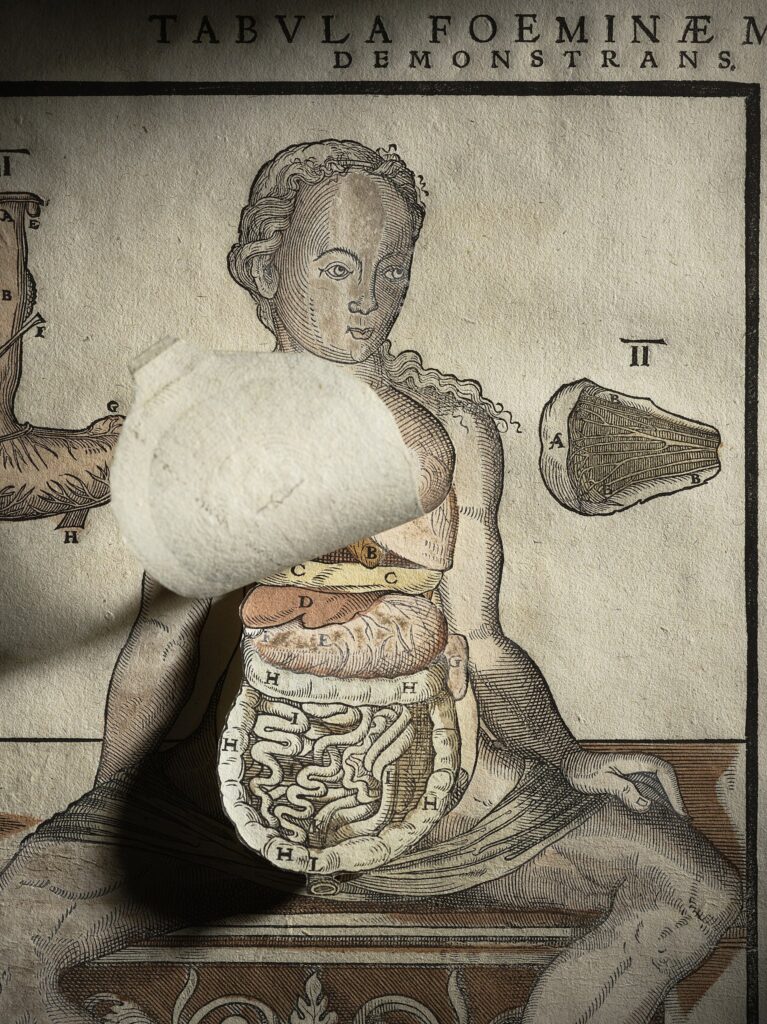For nearly 500 years, the groundbreaking work of 16th-century anatomist Andreas Vesalius has shaped medical education, but one of his most innovative tools—anatomical “manikins” designed to teach 3D anatomy—has largely remained in the shadows. Now, for the first time, these intricate paper models have been brought together by American researchers, offering a fresh look at how Vesalius revolutionised the study of the human body.
A 16th-Century Innovation in Anatomical Teaching
As the most prominent anatomist of the Renaissance, Vesalius redefined the understanding of the human body with his seminal works De Humani Corporis Fabrica and Epitome. Among his innovations were the anatomical manikins—large sheets printed with layers to be cut out and assembled into 3D models. These tools allowed students to study vessels, nerves, and organs without access to cadavers, providing an unprecedented method for independent learning.
“What’s amazing is that these manikins were the first attempt to accurately show the organ systems of the body in a 3-D anatomical representation,” said Dr. Mark Preul, director of The Loyal and Edith Davis Neurosurgical Research Laboratory at Barrow Neurological Institute in Phoenix, Arizona. “Students could use these cut out flap assemblies as dissection guides or to study anatomy when they did not have bodies to dissect. Vesalius seized on new printing technology and began a revolution in anatomical teaching with his texts in 1543. They have been written about, but the whole set of them has never been shown graphically together.”
The Historical Context of Vesalius’ Work
The manikins emerged during a transformative period in medical history. The 16th century saw the loosening of restrictions on human dissection by the Church and the advent of the printing press in Europe. These changes enabled Vesalius to produce detailed, realistic anatomical illustrations and advocate for hands-on dissection over reliance on outdated theories, such as those of Galen.
“Vesalius’ work was instigated by his belief that effective learning must be in the hands of the dissector,” said Dr. Preul. “This concept remains a bedrock of modern surgical and neurosurgical training, where understanding complex anatomical structures in a spatial context remains essential for excellent practice.”
Bringing the Manikins Together for the First Time
The year-long project, conducted by Barrow researchers in collaboration with the Huntington Library in California and the New York Academy of Medicine, involved delving into 16th-century primary sources to piece together Vesalius’ full set of manikins. The result was the first comprehensive visual presentation of these revolutionary tools.
“Vesalius has been hailed for destroying ancient dogma by correctly illustrating dissections and his anatomic discoveries,” the researchers noted. His manikins exemplify his ability to combine accurate anatomical knowledge with emerging technologies to create practical teaching tools.
Vesalius’ Enduring Legacy
The anatomical manikins not only symbolise Vesalius’ innovative approach to education but also highlight how his methods paved the way for modern medical practices. Today, the principles he championed—hands-on learning and a focus on accurate, spatial understanding of anatomy—remain at the core of surgical and neurosurgical training.
The rediscovery and reunion of Vesalius’ manikins provide a reminder of how the evolution of medical education is deeply connected to the innovations of the past. Vesalius’ belief in active, engaged learning continues to shape the way anatomy is taught and practised.
The article, “Vesalius and His Manikin: An Enduring Influence on Modern Anatomic Teaching,” by Thomas J On, Yuan Xu, Jubran H Jubran, Andrea L Castillo, Ali Tayebi Meybodi, Oscar Alcantar-Garibay, T Forcht Dagi and Mark C Preul, is published in Neurosurgery. Click here to access this article.
See also: Make your own anatomical manikin: human anatomy model inspired by Andreas Vesalius
Top Image: Wellcome Collection gallery (2018-03-23): https://wellcomecollection.org/works/e2u9tub8 CC-BY-4.0
Subscribe to Medievalverse


